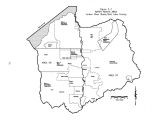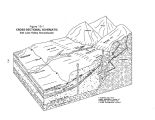| OCR Text |
Show for all public lands and resources under its jurisdiction, including water quality considerations. Within the state as a whole, vast areas of land fall under BLM jurisdiction. In the Jordan River Basin, however, the BLM manages only 9,778 acres scattered throughout the valley in several small patches ( See Figure 3- 3 for locations). The largest block of BLM ground is located in Butterfield Canyon in the Oquirrh Mountains at the southwest portion of the Basin. The management of BLM ground is outlined in the bureau's Pony Express Resource Management Plan. 16.3.2 Bureau of Reclamation The Bureau of reclamation programs for water resources fall into four broad categories: investigations, research, loans and service. All require close cooperation with the concerned entities. Investigation Programs - General investigations are conducted for specific and multipurpose water resources projects, including an environmental assessment. Research Programs - The bureau conducts research on water- related design; i construction; materials; atmospheric management; and wind, geothermal and solar power. Most programs are conducted in cooperation with other entities. Loan Programs - These programs have provided federal loans to qualified organizations wishing to construct or improve smaller and generally less complex water resources development. The bureau has recently reassessed its loan programs and concluded that they need major redirection. As a result, The bureau is no longer accepting applications for loans. Service Programs - These are intergovernmental specialized technical service programs designed to provide data, technical knowledge and expertise to states and local government agencies to help avoid duplication of special service functions. Local governments pay for requested services. 16.3.3 Cooperative State Research, Education, and Extension Service This new agency is assigned responsibility for all cooperative state and other research programs presently performed by the Cooperative State Research Service, all cooperative education and ons. extension programs presently performed by the ill Extension Service, and such other functions related to isin, cooperative research, education and extension as may be assigned. ; est 16.3.4 Corps of Engineers The Corps of Engineers ( COE) was development est oriented in the past, with emphasis on large flood control projects. The COE, jointly with the Utah Department of Natural Resources, completed the Wasatch Front and Central Utah Flood Control Study in 1984, a document with considerable pertinent flood- related data for the Jordan River iter Basin. Today's COE, though still involved with flood control and mitigation, has taken on the additional role, of regulating the nation's wetlands and tities. waterways. As part of the federal permitting process ations ( Section 404, Clean Water Act), the COE investigates ter the technical feasibility, environmental impacts and social acceptability of any channel improvement or development in wetlands and water courses. Local entities and interest groups can petition ) f Congress for assistance if they are unable to cope ly with large water resource problems. Requests for assistance with smaller problems can be made directly to the Corps of Engineers. The COE can investigate n, economic and technical feasibility and social and environmental acceptability of remedial measures, br When the problems cover an entire river basin, it is studied as a unit. Close coordination is maintained Little Dell Reservoir 16- 2 |

















































































































































































